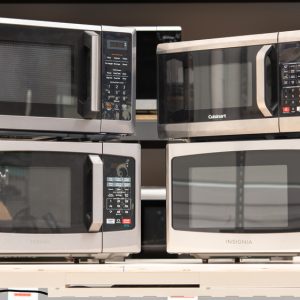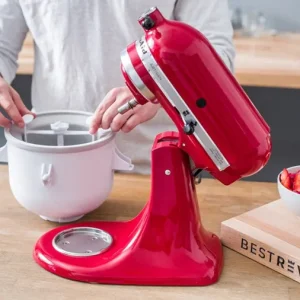
Are you tired of buying disposable lunch containers every day? Do you want to save money and reduce waste? If so, investing in a quality lunch box is a great solution. In this article, we’ll guide you through everything you need to know about choosing the best lunch boxes. From what to look for and how to use them to their pros and cons, alternatives, and step-by-step instructions on packing your lunch, we’ve got you covered! Here is our advices to choose the Lunch Boxes
Who Needs a Lunch Box?
Anyone who brings their lunch from home can benefit from a lunch box. Whether you’re a student, an office worker, or someone who enjoys picnics and outdoor activities, a lunch box can keep your food fresh and organized while reducing waste.
Students
For students, a lunch box is a practical and eco-friendly way to carry their meals to school. It allows them to pack a variety of healthy snacks and meals that can keep them energized throughout the day.
Office Workers
For office workers, a lunch box is a convenient way to bring their meals to work. Instead of relying on unhealthy fast food options, they can prepare their lunch at home and bring it with them. This saves them time and money, and also helps them make healthier choices.
Outdoors Enthusiasts
For outdoors enthusiasts such as hikers, campers, and picnic-goers, a lunch box is a must-have item. It allows them to pack food that is easy to transport and consume while enjoying the great outdoors.
What to Look for When Choosing a Lunch Box
When choosing a lunch box, there are several factors to consider. Here are some important things you should keep in mind:
- Size: The size of your lunch box will depend on how much food you plan to pack. Consider the portion sizes you usually eat and choose a lunch box that can accommodate them.
- Material: Lunch boxes are typically made of plastic, metal, or fabric. Each material has its advantages and disadvantages, so choose one that suits your needs and preferences.
- Insulation: If you plan to pack perishable items such as sandwiches, fruits, or yogurt, look for a lunch box with good insulation. This will help keep your food fresh and safe to eat.
- Compartments: Some lunch boxes come with multiple compartments, which can be useful for packing different types of food. Consider whether you need this feature and choose a lunch box accordingly.
- Ease of cleaning: A lunch box that is easy to clean and maintain is essential. Look for one that can be washed in the dishwasher or wiped clean with a damp cloth.
When to Use a Lunch Box
Lunch boxes can be used in a variety of settings and situations. Here are some examples:
- School: Students can use lunch boxes to bring their meals to school.
- Work: Office workers can bring their lunch boxes to work and enjoy their homemade meals during their lunch breaks.
- Outdoors: People who enjoy outdoor activities such as camping, hiking, or picnicking can use lunch boxes to pack their meals and snacks.
- Travel: Lunch boxes are also great for traveling. They allow you to bring your own food on long flights or road trips, saving you money and ensuring that you have access to healthy options.
How to Choose the Right Lunch Box for You
Choosing the right lunch box for you depends on several factors. Here are some steps you can follow:
- Determine your needs: Consider how much food you plan to pack, whether you need insulation or compartments, and what material you prefer.
- Read reviews: Look for reviews of different lunch boxes online to get an idea of their quality and performance.
- Set a budget: Decide how much you are willing to spend on a lunch box and stick to it.
- Buy from a reputable source: Purchase your lunch box from a reputable seller to ensure that you get a high-quality product.
Pros and Cons of Using a Lunch Box
Like any product, lunch boxes have their pros and cons. Here are some of the advantages and disadvantages of using a lunch box:
Pros
- Environmentally friendly: Using a lunch box reduces the amount of waste generated by disposable containers.
- Saves money: Packing your own lunch in a lunch box is usually cheaper than buying food from restaurants or cafes.
- Healthier options: By packing your own lunch, you have control over what you eat and can choose healthier options.
- Convenient: Lunch boxes are easy to transport and can be used in a variety of settings.
Cons
- Extra preparation time: Packing your lunch in a lunch box requires some extra preparation time in the morning or the night before.
- Limited capacity: Lunch boxes have a limited capacity, which may not be enough for people with big appetites.
- Can be bulky: Some lunch boxes can be bulky and take up a lot ofspace in a bag or backpack.
- Odors and stains: Lunch boxes can sometimes retain odors or stains from the food, which can be difficult to remove.
Alternatives to Using a Lunch Box
If a lunch box doesn’t suit your needs or preferences, there are several alternatives you can consider:
- Paper bags: You can use paper bags to pack your lunch. They are cheap, disposable, and lightweight, but not very eco-friendly.
- Plastic containers: Plastic containers are another option for packing your lunch. They are reusable and come in various sizes and shapes, but may contain harmful chemicals.
- Bento boxes: Bento boxes are a traditional Japanese lunch box that consists of compartments for rice, vegetables, meat, and other foods. They are aesthetically pleasing and can help with portion control.
- Mason jars: Mason jars are a trendy option for packing salads, smoothies, and other meals. They are reusable and easy to clean, but may not be suitable for hot food.
Step-by-Step Guide to Packing Your Lunch
Packing your lunch in a lunch box is easy and can be done in a few simple steps:
- Choose a lunch box that suits your needs and preferences.
- Decide what food you want to pack and prepare it the night before or in the morning.
- Use containers or plastic bags to separate different types of food.
- Put ice packs or frozen water bottles in the lunch box to keep the food cool.
- Close the lunch box tightly and place it in a bag or backpack.
Comparison of Popular Lunch Boxes
To help you choose the best lunch box for you, we’ve compared some popular options based on their size, material, insulation, and other features. Here’s a summary:
- Yumbox: This bento-style lunch box comes with compartments for different types of food. It is lightweight, leakproof, and easy to clean.
- Bentgo: This lunch box has two compartments and comes with a fork, knife, and spoon. It is microwave-safe and can be used for hot or cold food.
- Hydro Flask: This insulated lunch box is made of stainless steel and can keep food cold or hot for hours. It is durable and eco-friendly.
- Rubbermaid LunchBlox: This modular lunch box can be customized with different containers and ice packs. It is stackable and space-saving.
Tips for Using Your Lunch Box
Here are some tips for getting the most out of your lunch box:
- Clean it regularly: Wash your lunch box after each use to prevent odors and stains from building up.
- Use ice packs or frozen water bottles: To keep your food fresh and safe to eat, use ice packs or frozen water bottles in your lunch box.
- Pack a variety of foods: To avoid getting bored with your lunch, pack a variety of foods such as fruits, vegetables, nuts, and protein.
- Label your lunch box: If you share a fridge or a kitchen with others, label your lunch box to avoid confusion.
FAQs
- Can I put my lunch box in the dishwasher?
It depends on the material of your lunch box. Plastic and metal lunch boxes are usually dishwasher-safe, but fabric ones may not be. Check the manufacturer’s instructions before washing your lunch box in the dishwasher.
- How do I remove odors from my lunch box?
You can remove odors from your lunch box by washing it with soap and water and then wiping it with a mixture of baking soda and water. You can also leave an open container of baking soda in the lunch box overnight to absorb any remaining odors.
- Can I pack hot food in my lunch box?
It depends on the type of lunch box you have. Some lunch boxes are designed for hot food, while others are not. Check the manufacturer’s instructions before packing hot food in your lunch box.
- How long can I keep my food in the lunch box?
It is recommended to keep perishable food such as meats, dairy products, and salads in the lunch box for no more than four hours. After that, they may become unsafe to eat.
- Are there any eco-friendly lunch box options?
Yes, there are many eco-friendly lunch box options available, including stainless steel, glass, and bamboo. These materials are reusable and can help reduce waste.
Conclusion
Investing in a quality lunch box is a practical and eco-friendly way to bring your meals from home. By considering factors such as size, material, insulation, and compartments, you can choose a lunch box that suits your needs and preferences. Remember to clean your lunch box regularly, use ice packs or frozen water bottles, and pack a variety of foods to get the most out of it. With these tips and tricks, you’ll be able to enjoy delicious and healthy meals on the go!









